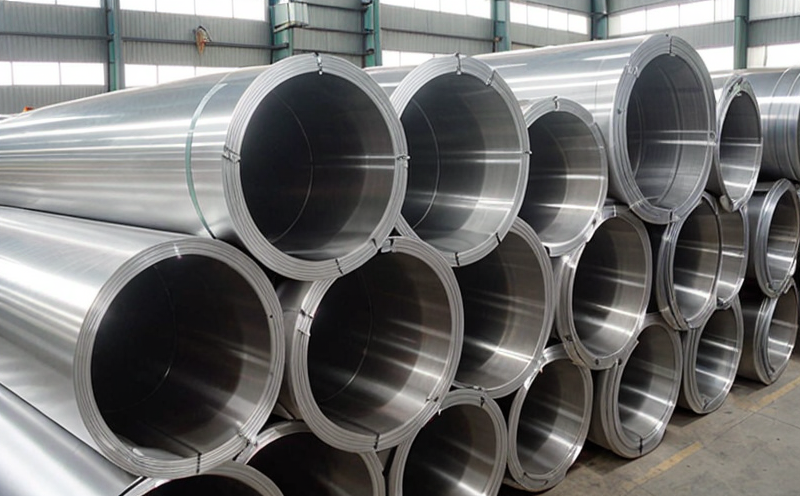IEC 60068 2 68 Sand and Dust Simulation Testing Validation Method Development Test
The IEC 60068-2-68 standard specifies a method for simulating the effects of sand and dust exposure on electronic equipment. This test is crucial in ensuring that marine and shipboard equipment can withstand harsh environmental conditions, particularly those encountered during operation at sea or in coastal areas.
The test involves exposing specimens to a combination of sand particles and air flow under controlled conditions to simulate natural environments where sand and dust are prevalent. The goal is to validate the design and material choices made for equipment used in marine and shipboard applications. This testing method plays a vital role in enhancing the reliability, durability, and safety of such equipment.
The primary focus areas include:
- Material integrity
- Electrical performance under sand and dust conditions
- Functional integrity of mechanical components
- Surface finish degradation due to abrasive materials
Testing is performed in a specially designed chamber where environmental parameters are carefully controlled. The test setup includes:
- A sand flow system that simulates wind-blown dust conditions
- An air flow system to control the velocity and direction of airflow
- Sensors to monitor temperature, humidity, and particle size distribution
The specimen preparation involves selecting representative samples of the equipment under test. These samples are then mounted in a manner that replicates real-world usage conditions as closely as possible.
Upon completion of the test, detailed reports are generated outlining:
- Test parameters and environmental conditions
- Observations during testing
- Data collected from sensors
- Evaluation of specimen integrity and performance
The IEC 60068-2-68 test is essential for ensuring that marine and shipboard equipment meets international standards, thereby enhancing the overall safety and reliability of these systems.
| Test Parameter | Environmental Condition | Measurement |
|---|---|---|
| Sand Particle Size Distribution | Controlled by ISO 14688-2 | Mean diameter and standard deviation |
| Air Flow Velocity | 0.5 m/s to 3 m/s | Measured using an Anemometer |
| Test Duration | Up to 96 hours | Dependent on specimen response |
| Temperature | -25°C to +40°C | Monitored with a thermocouple |
| Humidity | 30%RH to 85%RH | Measured using a humidity sensor |
This testing method is widely recognized for its role in ensuring that equipment used in marine and shipboard applications can withstand the rigors of environmental exposure. Compliance with IEC standards ensures that products meet global quality and safety benchmarks.
Quality and Reliability Assurance
The IEC 60068-2-68 sand and dust simulation test is a critical component in the quality assurance process of marine and shipboard equipment. It ensures that products not only meet but exceed international standards, thereby enhancing their reliability and longevity.
Quality managers and compliance officers rely on this testing to:
- Identify potential weaknesses in design and material selection
- Evaluate the effectiveness of protective coatings and enclosures
- Determine the suitability of components for harsh environments
- Ensure compliance with IEC, ISO, and ASTM standards
R&D engineers use this test to:
- Innovate new materials and designs that can withstand sand and dust exposure
- Evaluate the performance of existing products under simulated environmental conditions
- Optimize production processes for cost-effectiveness and reliability
- Ensure long-term durability and maintainability
The test also supports procurement teams in:
- Selecting suppliers who meet stringent quality and safety standards
- Evaluating the robustness of materials used in equipment manufacturing
- Ensuring that all components are compatible with the overall system design
- Achieving cost savings through efficient testing strategies
In summary, the IEC 60068-2-68 sand and dust simulation test is an indispensable tool in maintaining high standards of quality and reliability in marine and shipboard equipment.
Competitive Advantage and Market Impact
The IEC 60068-2-68 sand and dust simulation test provides a significant competitive edge by ensuring that marine and shipboard equipment is not only reliable but also compliant with global standards. This compliance opens up international markets, enabling manufacturers to:
- Gain access to diverse markets with varying environmental conditions
- Earn the trust of customers through proven quality and safety
- Differentiate from competitors by offering superior product reliability
- Achieve regulatory compliance in multiple jurisdictions
The test also contributes to:
- Increased market share due to enhanced customer satisfaction
- Faster time-to-market through streamlined testing processes
- Cost savings from reduced rework and warranty claims
- Better resource allocation for R&D efforts
By ensuring that equipment can withstand sand and dust conditions, manufacturers can confidently enter competitive markets with products that are not only reliable but also cost-effective. This enhances their reputation in the market and positions them as leaders in the field of marine and shipboard equipment.
Use Cases and Application Examples
The IEC 60068-2-68 sand and dust simulation test finds extensive application in the design, development, and quality assurance of marine and shipboard equipment. Some key examples include:
- Marine communication devices
- Navigation systems
- Control panels for ship machinery
- Electrical enclosures used in harsh environments
- Instrumentation and sensors for environmental monitoring
The table below provides specific use cases:
| Use Case | Example Equipment | Tested Parameters |
|---|---|---|
| Marine communication devices | VHF radios, satellite phones | Radiation resistance to sand and dust particles |
| Navigation systems | ECDIS (Electronic Chart Display and Information System) | Reliability under sand and dust conditions |
| Control panels for ship machinery | Motor control centers, switchboards | Electrical performance in dusty environments |
| Electrical enclosures used in harsh environments | Cabinetry for electrical equipment | Material integrity and surface finish stability |
| Instrumentation and sensors for environmental monitoring | Water quality monitors, air quality sensors | Absolute humidity resistance to sand particles |
In each of these applications, the IEC 60068-2-68 test ensures that equipment can perform reliably under harsh environmental conditions. This is particularly important for marine and shipboard applications where exposure to sand and dust is a common occurrence.





